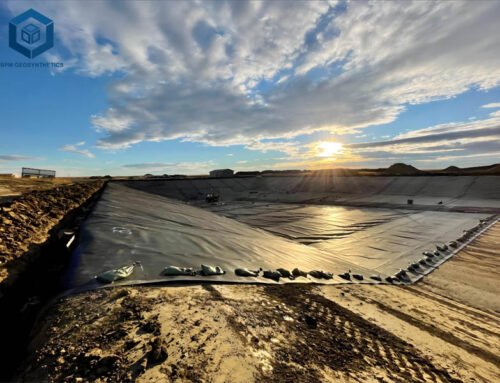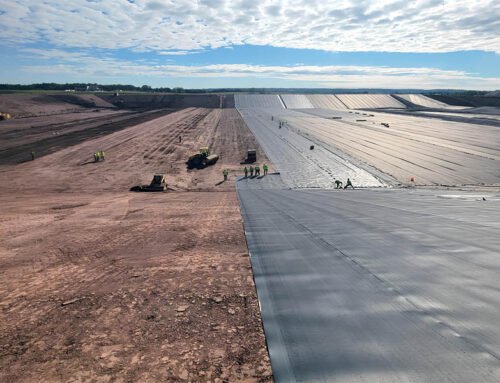HDPE geomembrana liner is more cost effective anti-seepage material to install and maintain than any other form of water storage. Globally, water scarcity is one of the major challenges. Growing population, urbanization, and industrial and agricultural development have increased demand for water resources, resulting in water supplies that cannot meet demand.
Global water resources are facing problems such as water shortage, water pollution, and climate change. Water is valuable, and it is getting more scarce. Water is a key resource for agricultural development and ecological environment protection. reservoir, lake or water pond anti-seepage projects are crucial to the reasonable use of water resources.
From the view of geomembrane manufacturers, we will introduce how to install HDPE geomembrane for the anti-seepage reservoir, lake or ponds. The main steps include installation preparation, tools and equipment, precautions, post-installation inspection and effect analysis, etc.
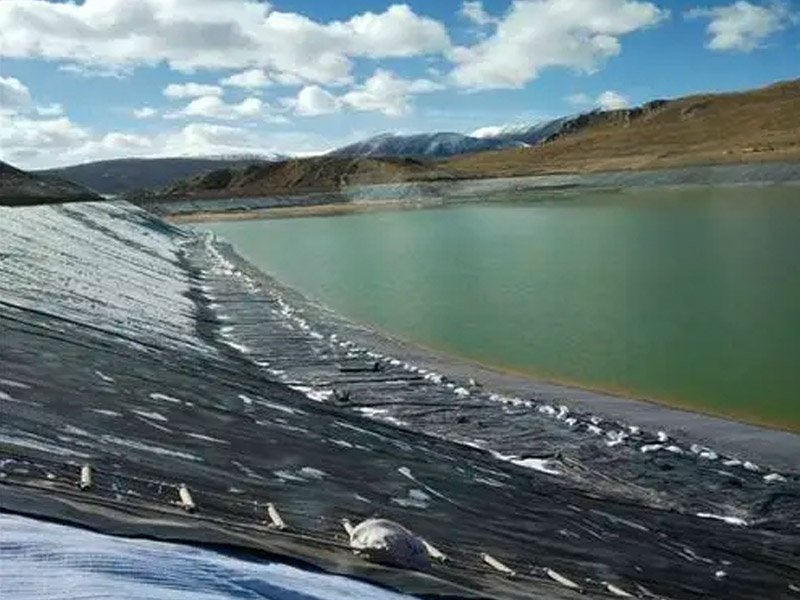
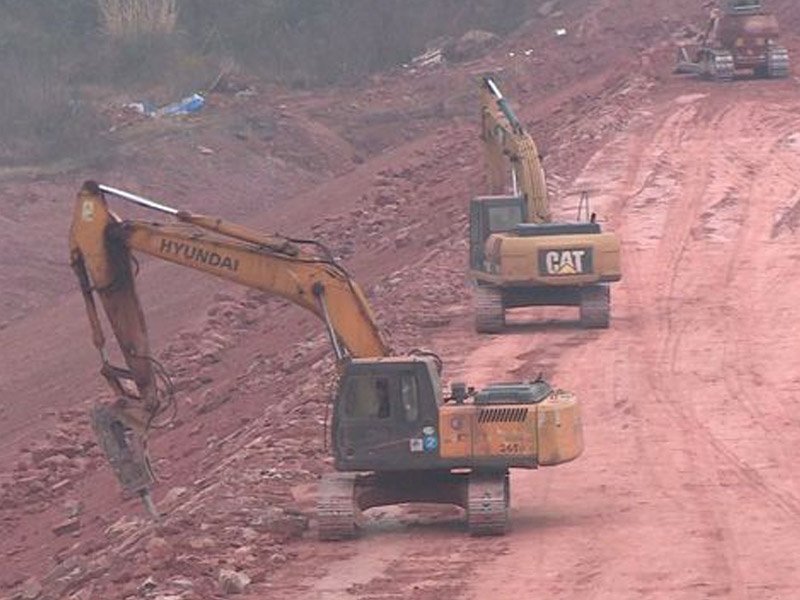
1. What Is A HDPE Geomembrana Liner?
A HDPE Geomembrana liner is also known as HDPE geomembrane liner. The HDPE geomembrana is the very low permeability synthetic membrane liner or barrier used with any geotechnical engineering related material so as to control fluid or gas migration in a human-made project, structure, or system. Geomembrana liner is widely used in water pond system as an efficient and reliable anti-seepage material.
There are many best geomembrana liner brands on the global market. Among them, titan environmental pond liner, GSE geomembrane pond liner, XR 5 geomembrana pond liner, BPM pond liner, Solmax pond liner, layfiled argu pond liner are the best. HDPE geomembrane pond liner better best physical and chemical properties than PVC liner, plastic liner, LDPE liner, etc.
2. What Are Main Specifications of HDPE Geomembrana Liner?
BPM manufactures and wholesales best pond liner with black color, white color, or blue color. The geomembrana liner thickness is 20 mil, 30 mil, 40mil, 60 mil, 80 mil and 120 mil. 30mil HDPE liner, 60 mil HDPE liner are hot selling geomembrans. Other specification can be customized. What is the thickness of a mil? One mil is 0.0254mm. Then the common geomembrana liner thickness is 0.5mm, 0.75mm, 1.0mm, 1.5mm, 2mm, 3mm, etc.
Common geomembrana liner width include 6m, 7m, 8m, 10m, 12m. Geomembranas are generally packed in rolls, the length of each roll is 50m, 150m, 200m. Custom HDPE geomembrana size is available.
3. What Are Functions of HDPE Geomembrana Liner?
geomembrana liner is the ideal geosynthetic material for pondpond anti-seepage lining projects. The geomembrana liner is designed to prevent water seepage and leakage, ensuring efficient water storage and conservation.
3.1 Prevent Water Loss
geomembrana liner can create a barrier between the water and the surrounding soil in the reservoir, lake or ponds to prevent water loss. Geomembrana liner are the impermeable materials such as geomembrane, HDPE (high-density polyethylene), PVC (polyvinyl chloride), or EPDM (ethylene propylene diene monomer). geomembrana liner plays a crucial role in improving pond system efficiency, water conservation, and environmental sustainability.
3.2 Water Conservation
By preventing water seepage and leakage, geomembrana liner help to maximize water storage capacity and reduce water loss. The geomembrane pond liner can greatly to ensure efficient water usage in pondsystems.
3.3 Contamination Prevention
The HDPE geomembrana liner acts as a barrier to prevent the contaminant infiltration from the surrounding soil and groundwater into the reservoir. It is helpful thus maintaining water quality.
3.4 Longer Service Life
High-quality geomembrana liner are durable and resistant to UV radiation, chemical exposure, and punctures, ensuring long-lasting performance and minimal maintenance requirements.Flexibility: geomembrana liner can be customized and fabricated to fit various shapes and sizes of reservoirs, allowing for flexibility in designing pond storage systems.
3.5 Environmental Protection
By minimizing water seepage and leakage, geomembrana liner help protect the surrounding environment from soil erosion, groundwater depletion, and contamination.
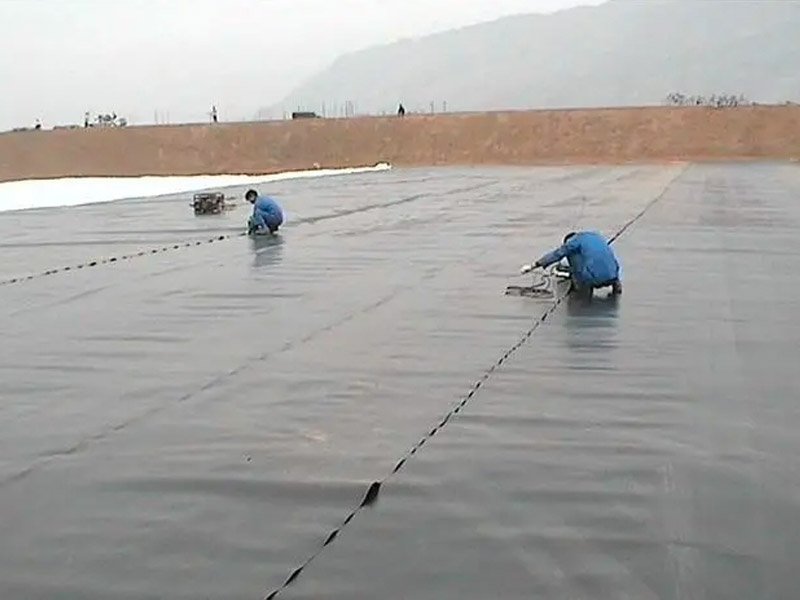
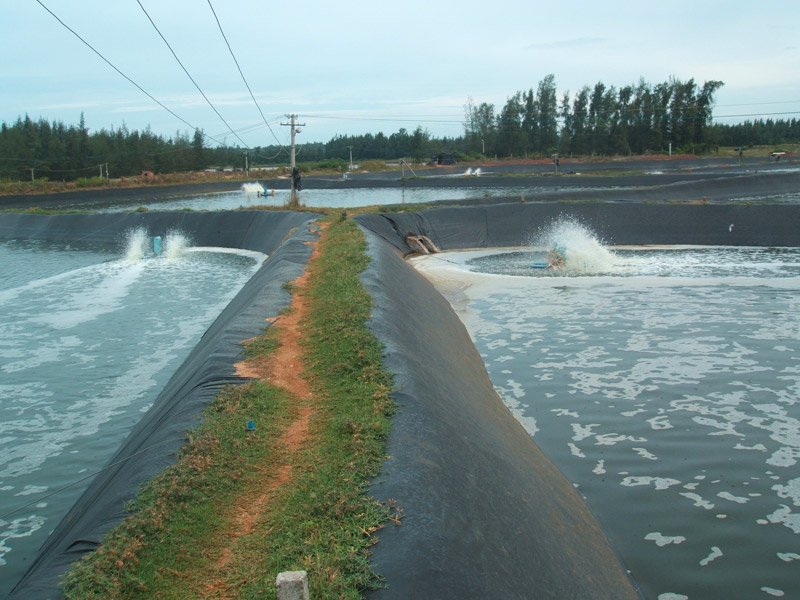
4. How To Prepare Geomembrana Liner Installation?
4.1 Design and planning
Before installing the geomembrane liner, thorough design and planning are crucial for the success of a water anti-seepage project. Key considerations during this stage include the size, shape, geology, water volume needs, and anti-seepage requirements of the reservoir. Factors such as the reservoir’s dimensions, slope angle, and layout are determined based on its purpose and scale. Geological conditions, including soil type, water table, and groundwater flow, are assessed to select the appropriate geomembrane type and thickness. Water volume requirements and anti-seepage needs are also taken into account to determine the geomembrane material, thickness, and additional measures like drainage systems and leakage control facilities.
4.2 Material preparation
Material preparation is a critical step in reservoir anti-seepage projects to ensure reliable and effective anti-seepage performance. It involves selecting high-quality geomembrane materials, such as HDPE or PP, that meet design requirements and comply with national standards. Transportation and storage of the geomembrane must be carefully handled to avoid damage and maintain its quality. Prior to construction, the geomembrane should undergo thorough inspection and testing, including thickness, density, tensile strength, and joint evaluations, to ensure compliance with specifications. Additionally, auxiliary materials like geotextiles, slope protection materials, and joint materials should be procured following appropriate standards to meet project requirements.
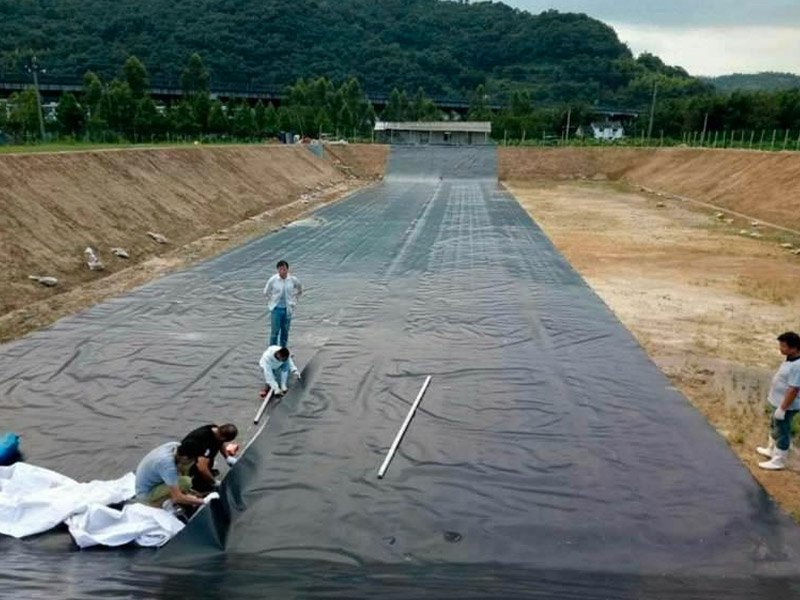

4.3 Geomembran Installaton Site preparation
This is a crucial step in the reservoir anti-seepage project, aiming to provide a safe, stable and suitable working environment for construction.
4.3.1 Preliminary Preparation
First, site preparation includes surveying and grading the construction site. Before construction, it is necessary to understand relevant information such as geological conditions and groundwater levels. According to the survey results, the construction site will be leveled and obstacles, weeds and debris will be removed to ensure that the construction area is clean and open.
4.3.2 Construction
Secondly, according to the design requirements and construction plan, earth excavation and pit digging operations are carried out to install geomembranes and other anti-seepage materials. At the same time, filling work also needs to be carried out to ensure uniformity, stability and appropriate height of the construction site.
4.3.3 Installation of Drainage Facilities
Third, set up reasonable drainage ditches, drainage pipes and rainwater collection facilities around the construction site to ensure the drainage of rainwater and groundwater during construction.
5. Geomembrana Installation Tools and Equipment
5.1 Geomembrane expansion equipment
According to the size and shape of the reservoir, select appropriate geomembrana liner expansion equipment, such as expansion machines, carts, etc.
5.2 Geomembrane Cutting tools.
Have a sharp cutting tool, such as a razor blade or scissors, ready to use to adjust the size and shape of the geomembrana liner.
5.3 Geomembrane Fixing tools.
Have tools ready to secure the geomembrana liner, such as a hammer, nails or nail gun.
5.4 HDPE liner welding machine
6. How To Install Geomembrana Liner
6.1 The laying of geomembrana liner
This is a key step in the reservoir anti-seepage project. It plays the role of preventing water penetration and ensuring the sealing and anti-seepage effect of the reservoir. You can find a hdpe liner installation company help you for geomembrane installation. The steps for laying geomembrane liner are as follows.
6.1.1 Pre-embedded Geomembrane
First, before laying geomembrana liner. Geomembrane liner need to be pre-processed, including unfolding, pruning and repairing. Unroll the geomembrana liner from the roll and inspect their surface for damage or breakage. If damaged, it will need to be repaired or replaced. In addition, the geomembranas need to be trimmed to fit the design requirements and have neat edges for easy seaming and fastening.
6.1.2 Laying Construction
Secondly, with help of hdpe liner installation company, lay the pretreated geomembrana liner section by section on the construction area, taking care to avoid wrinkles and bubbles. To ensure that geomembrane liner are smooth and closely adhere to the surface, special laying tools such as rollers or pressure plates can be used. During the laying process, joints need to be processed according to design requirements to ensure the firmness and sealing of the joints. The seams can be hot-melted or cold-glued, the specific choice depends on the material and design requirements of the geomembranas.
6.1.3 Protective Measures
Third, in order to ensure the stability and durability of geomembrana liner, fixation and protection measures are required. The edges and corners of geomembrana liner can be secured using ground nails, clamps or weights to prevent them from moving and loosening. At the same time, the surface of geomembranas can also be covered with a protective layer, such as geotextile or slope protection material, to increase its ability to resist UV aging and mechanical wear.
6.1.4 Quality Inspection
Fourth, after the geomembrana liner are laid, with the help of HDPEliner installation company, quality inspection should be carried out, including checking the quality of the joints, the flatness and tightness of the geomembrana liner, etc. If problems are found, they should be repaired and rectified promptly. At the same time, records of the laying process must also be kept, including the date of laying, quality inspection results, materials used and process parameters, etc., to facilitate subsequent acceptance and traceability.
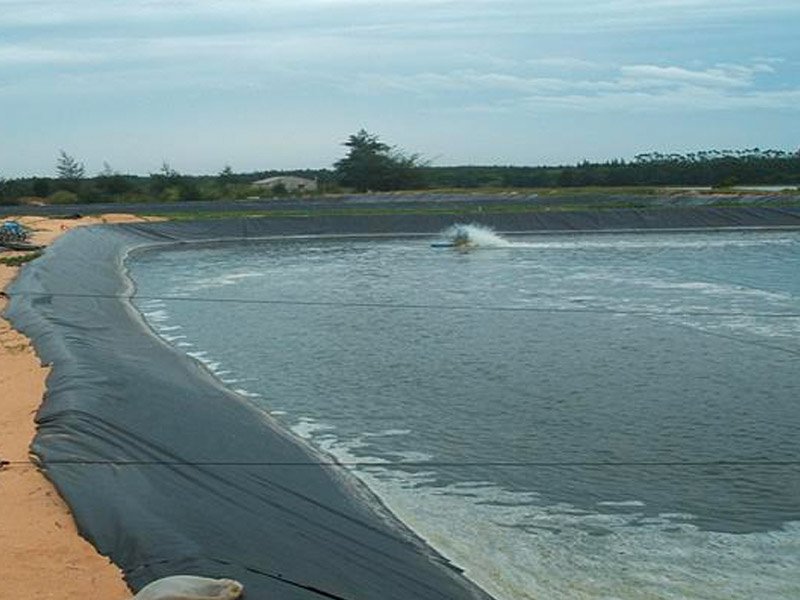
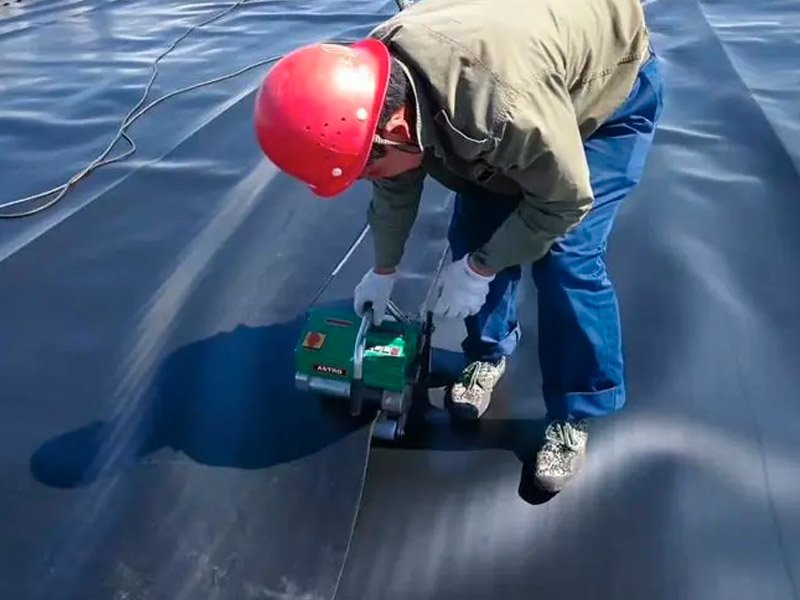
6.2 HDPE Geomembrana Joint treatment
First, clean the seam edges to remove dust, dirt, oil, etc. Then, trim the seam edges to make them neat and straight, ensuring proper alignment and overlap between edges. During the trimming process, special cutting tools, such as a cutter or scissors, can be used to ensure that the edges of the seams are flat and smooth.
Secondly, you need to pay attention to the operating specifications, use a hot air gun or hot knife to heat the edges of the seams to a molten state, and use pressure to connect them firmly to ensure the quality and stability of the seams.
In addition, after completing the seam processing, a quality inspection is required to check the firmness and sealing of the seams. You can use methods such as air pressure testing or water pressure testing to detect whether there is water or air leakage at the seams. If problems are found, repair and rectification will be carried out in a timely manner to ensure the quality of the joints.
6.3 Fixtion and curing
6.3.1 Fixed Edge
First, the edge of the geomembrana HDPE liner is fixed. After the geomembrane pond liner is laid, the edges of the geomembrane HDPE liner need to be fixed to prevent them from moving and loosening. Common fixing methods include using ground nails, clamps, heavy objects or buried fixing wires. Ground nails can be used to secure the edges of the geomembrane by driving them into the ground. The clamp can be fixed by clamping the edge of the geomembrana HDPE liner. Heavy objects can be placed on the edges of the geomembrane liner to increase its ability to resist wind and water impact. Burying the fixed line is to bury the fixed line underground and connect it to the edge of the geomembrana to increase the stability of the fixation.
6.3.2 Geomembrane Maintenance
Secondly, the geomembrane liner is cured. After the geomembrane is laid, it needs to be cured to improve its stability and durability. Curing can be accomplished using special curing agents or coatings. The curing agent can be applied to the surface of the geomembrane by spraying, brushing or dipping, allowing it to penetrate and solidify into the internal structure of the geomembrane pond liner, increasing its rigidity and anti-aging capabilities. The coating can form a protective layer by covering the surface of the geomembrane, increasing its ability to resist UV radiation and chemical attack. The specific method and material selection of curing treatment should be determined according to the material and design requirements of the geomembrane.
6.4 Panel overlap and trimming
Where overlap of geomembrane panels is required, ensure there is sufficient overlap length between panels to prevent leakage. Use cutting tools to trim the geomembrane to accommodate slopes and other special shapes.
7. How To Carry Out Geomembrana Post-installation Inspection?
7.1 Check geomembrane seams and fastenings
After the geomembrane HDPE liner is installed, with the help of HDPE liner installation company or geomembrane manufacturers, carefully check whether the connections at the seams are firm and sealed. Geomembrane liner installers can help checking the fixings, they are securely fastened to ensure that the geomembrane liner does not move or become loose.
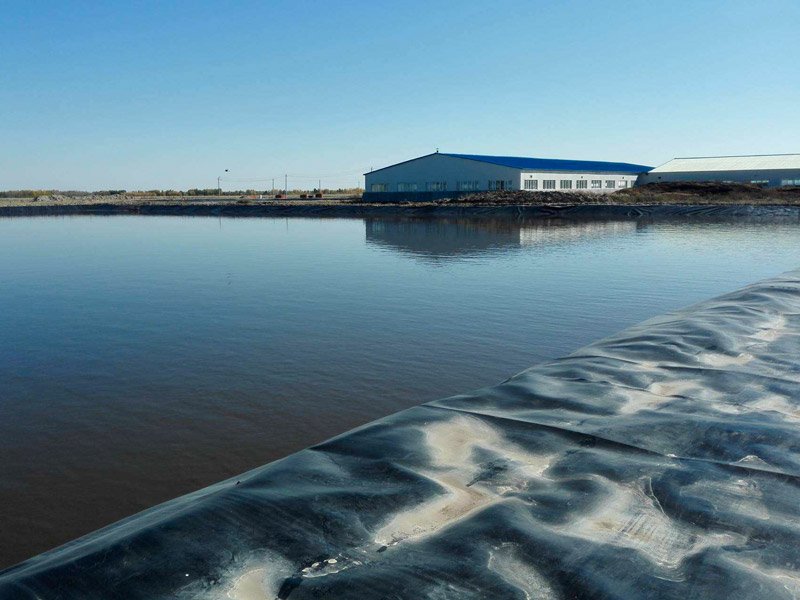
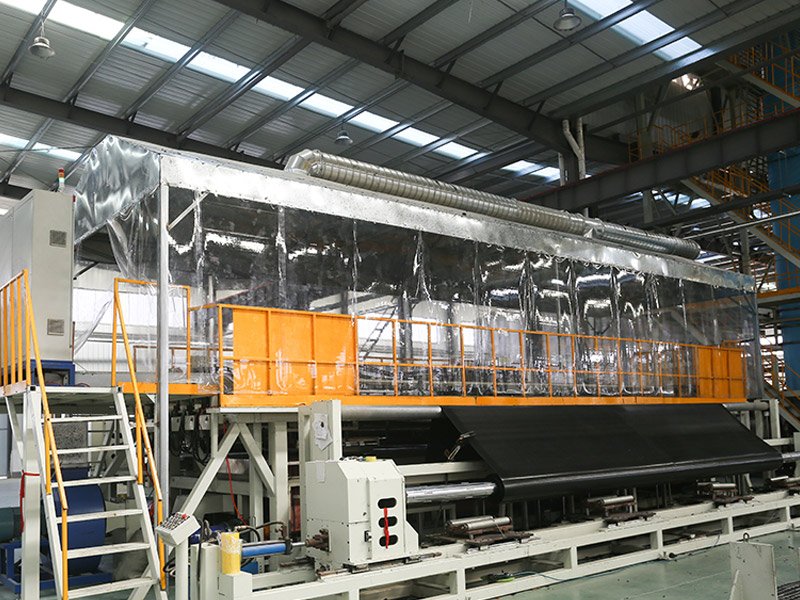
7.2 Check for geomembrane damage and defects
Carefully inspect the surface of the geomembranas for damage, scratches, or other defects. If problems are found, repair or replace the damaged parts promptly to ensure the integrity and effectiveness of the anti-seepage system.
7.3 Check water tightness
After installation is completed, with the guide of HDPE liner installation company or geomembrane manufacturers, a water tightness test is performed to verify the anti-seepage geomembrane performance. It can be checked through water injection test or pressure test to ensure that the anti-seepage requirements of the reservoir are met.
8. Conclusion
Water pond anti-seepage projects are of great significance for the rational utilization and protection of water resources. By properly installing geomembrana, leakage and water waste can be effectively prevented. This article introduces how to install geomembrana liner, including installation preparation, tools and equipment, precautions, post-installation inspection and effect analysis, etc. By following professional geomembrane installation guidelines, you can ensure the smooth progress of the reservoir anti-seepage project, improve the efficiency and service life of the water pond, and achieve sustainable water resources management.
Overall, HDPE geomembrane liner play a crucial role in improving reservoir, lake or pond system efficiency, water conservation, and environmental sustainability. They provide a reliable solution for storing and preserving water resources.
BPM Geomembrane had provided many types of effective and states of the art geomembrane and other geosynthetics to over 36 countries. BPM is not only manufacturing best quality geomembrane products but also providing professional design and installation service. OEM, ODM, custom development and fabrication are also available. If you have any questions or inquiries, please contact us, we will reply as soon as possible.



